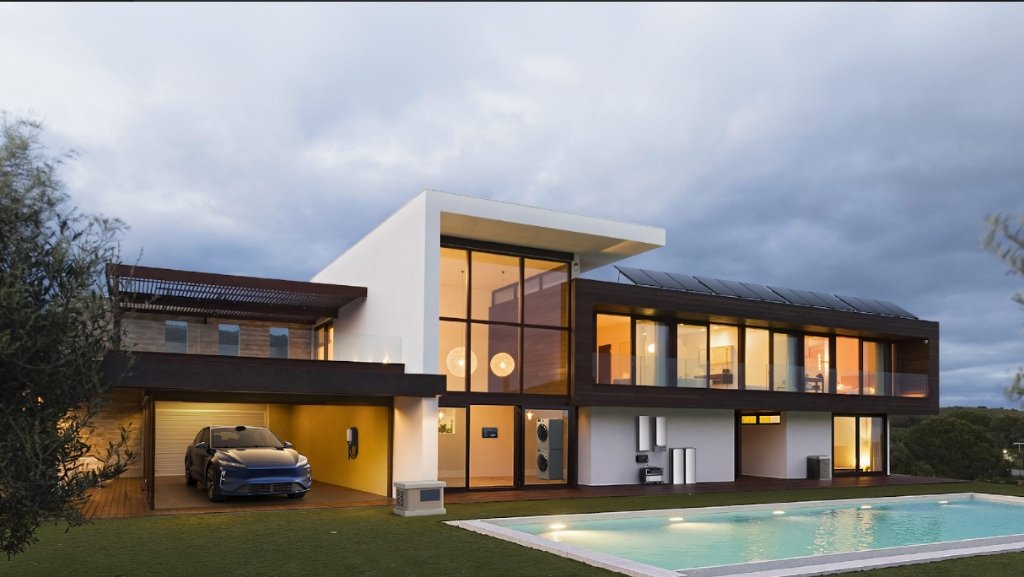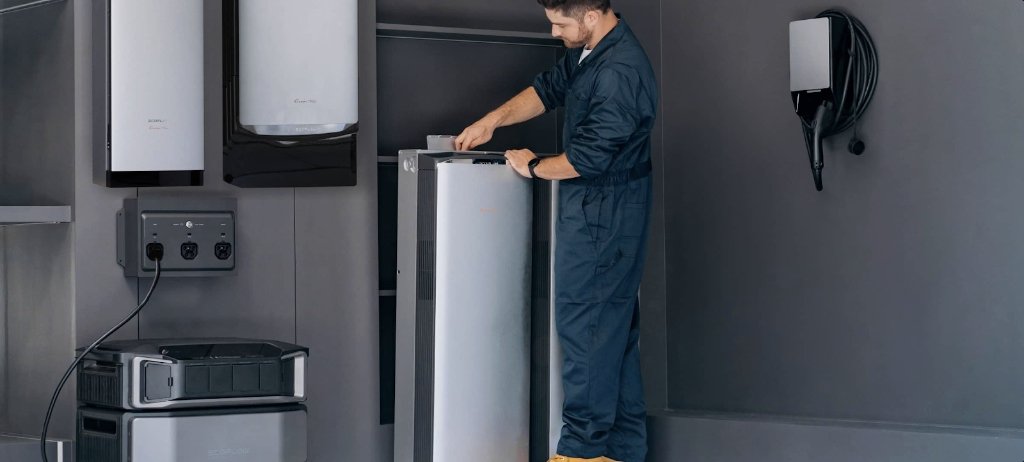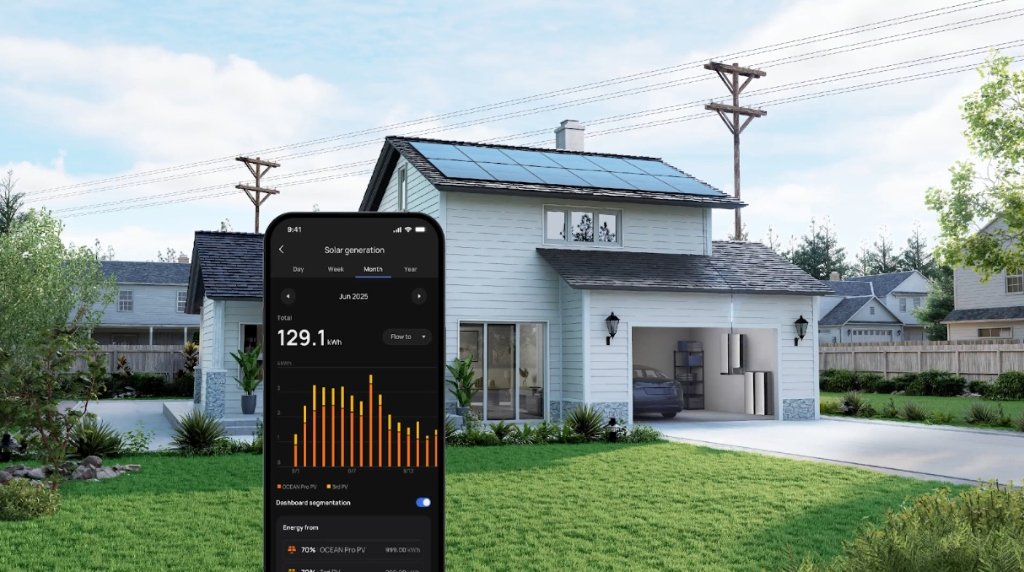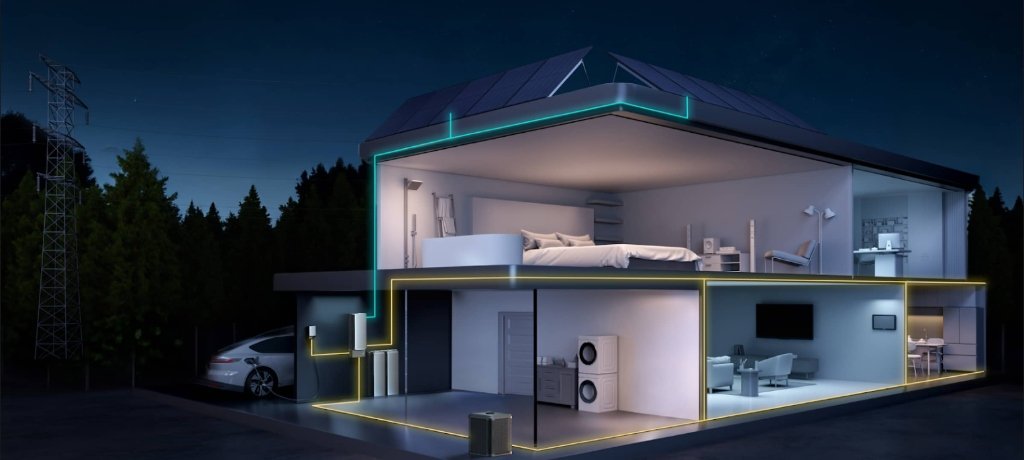Just a few years ago, home energy systems were simple: the grid supplied power, and you paid the bill. Maybe you added solar panels to offset some costs. But in 2025, a quiet revolution is underway—homes are becoming their own intelligent microgrids.
By combining solar generation, advanced energy storage, and smart electrical management, families are creating systems that can power themselves, balance demand, and even communicate with the broader grid. This is the era of the intelligent home grid—and it’s redefining what energy independence means.

Solar as the foundation of the intelligent home
Every self-sustaining home starts with generation. The sun remains the most abundant and predictable energy source, and solar technology has evolved dramatically over the last decade. Panels are now more efficient, affordable, and adaptable to diverse rooftops and climates.
But modern solar isn’t just about generating electricity—it’s about using it wisely. Systems like those featured on solar energy for home combine photovoltaic panels with intelligent inverters and storage-ready architectures. Instead of feeding excess power back to the grid at low rates, homeowners can store it, schedule its use, and keep their homes running independently day and night.
For example, a 6 kW rooftop array paired with a smart battery system can provide not just daytime power but overnight coverage too. And when the sun rises again, the system automatically refills, repeating the cycle. This loop transforms solar energy from a daytime advantage into a 24-hour resource.
Energy storage: the bridge between day and night
If solar is the foundation, energy storage is the bridge. Without it, much of that renewable energy would go unused. Today’s home battery backup systems are more powerful, efficient, and intelligent than ever before.
Modern systems like EcoFlow’s OCEAN Pro are designed to handle real household demands, not just a few emergency circuits. With 24 kW of continuous output, 50 kW surge capacity, and modular expansion from 10 kWh to 80 kWh, they can support everything from EV chargers to HVAC systems. Their 205A Locked Rotor Amp (LRA) surge capability means heavy appliances—like air conditioners or water pumps—start without tripping the system.
What truly sets these systems apart, though, is intelligence. Unlike traditional batteries that simply store and release power, intelligent storage adapts to your patterns. It learns when to charge, when to discharge, and how to make the most of dynamic utility rates.
This is where an integrated home battery backup becomes transformative. It’s not just emergency insurance—it’s a daily optimization engine that reduces bills, maximizes solar efficiency, and guarantees power security.

Smart panels: the brain of the modern energy ecosystem
Every intelligent grid needs a control center—and in the home, that’s the smart electrical panel. This device manages how energy moves through your house, deciding which circuits stay powered during outages, when to draw from the grid, and when to switch to battery or solar power.
Smart panels, like those found on smart electrical panel, take automation to the next level. They divide your home into manageable circuits—think kitchen, HVAC, lighting, and EV charging—and give you full control from your phone. Through an app, you can see real-time power flow, monitor each circuit’s consumption, and set priorities.
This technology brings intelligence to the distribution side of energy. Instead of powering your entire home blindly during an outage, you can prioritize critical functions: refrigeration, medical devices, Wi-Fi, and essential lighting.
For instance, EcoFlow’s Smart Panel 40 combines automatic transfer switching with circuit-level intelligence. It not only detects outages but also switches your home to backup mode seamlessly—within milliseconds—while letting you decide which areas stay live.

Smarter energy means more savings
The integration of solar, storage, and smart panels isn’t just about resilience—it’s about efficiency. Modern systems don’t wait for outages to prove their value. They continuously analyze when electricity is cheapest, when solar production peaks, and when your home uses the most power.
By using AI-based forecasting and time-of-use management, these systems can pre-charge during off-peak hours and discharge during peak demand. That means lower electricity bills, reduced strain on the grid, and higher returns on your solar investment.
And with 97.5% solar-to-home efficiency and 89% round-trip battery efficiency, intelligent systems ensure that nearly every watt of power generated or stored actually benefits your household.
Built for reliability in every environment
A truly intelligent system isn’t just smart—it’s resilient. Homes across the U.S. face vastly different conditions, from humid coastlines to snowy mountain regions. That’s why durability and environmental tolerance matter just as much as computing power.
Modern systems are designed for all-weather performance, operating from –4°F to 140°F, in 100% humidity, and at altitudes up to 3,000 meters. With NEMA 3R enclosures, they can be installed indoors or outdoors, adapting to garages, basements, or shaded patios.
This environmental flexibility ensures that intelligence doesn’t stop when the weather turns. Whether it’s a hurricane, heatwave, or blackout, your system remains operational—and your home stays powered.

Predictive intelligence: preparing for tomorrow
The biggest leap in home energy systems is prediction. Using weather forecasts, grid data, and machine learning, smart systems anticipate when to store energy, when to release it, and when to prepare for outages.
If severe weather is expected, the system automatically charges to full capacity. If sunny conditions are predicted, it optimizes storage levels to prevent overcharging. Some even adjust circuit priorities automatically to extend runtime during long blackouts.
This predictive behavior represents a fundamental change: energy systems are no longer reactive. They’re proactive, capable of managing uncertainty without manual intervention.
The role of intelligent design in community resilience
As homes become more self-sufficient, they also strengthen the communities around them. When multiple intelligent systems operate in a neighborhood, they can collectively reduce demand spikes and prevent blackouts.
In the future, homeowners may join virtual power plant (VPP) networks—where excess stored energy can be shared back to the grid during high demand. That means earning credits or incentives while helping stabilize local infrastructure.
This interconnected intelligence turns independence into a shared advantage. Your system supports not just your home—but your community.
Connclusion
Energy independence used to mean cutting ties with the grid. Today, it means building a home ecosystem that’s flexible, adaptive, and efficient. The intelligent home grid is the next logical step: combining renewable generation, powerful storage, and smart distribution under one coordinated system.
Solar panels capture clean power. Batteries store it efficiently. Smart panels distribute it intelligently. Together, they create homes that are not only self-sufficient but also self-optimizing.
For families looking to take control of their power, reduce costs, and prepare for whatever comes next, this is the future. The intelligent home grid isn’t just about surviving outages—it’s about thriving every day with cleaner, smarter, and more reliable energy.
